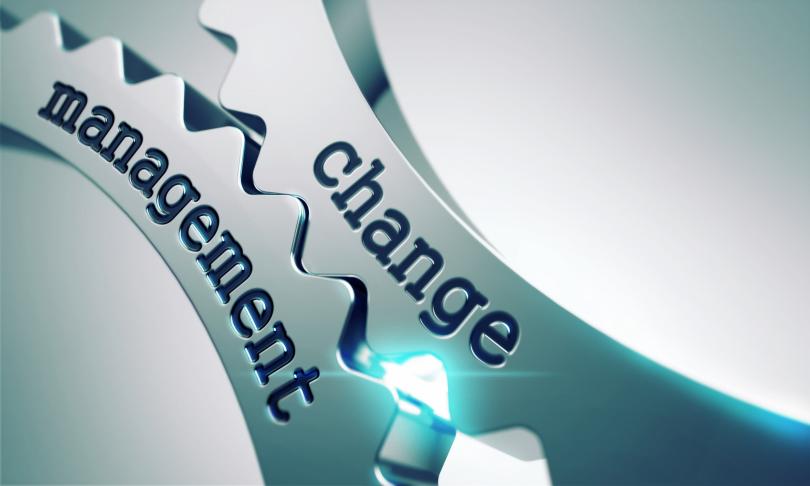
Three Steps Toward Creating Government Experiences That Put Customers First
Jessica Wingfield Performance Optimization, Innovation at the Pace of Need®Unlike the services provided by most private companies, government services are not only nice-to-haves — they are must-haves. Government agencies serving victims receiving help after a disaster, retirees applying for Social Security, veterans needing health care, and many others can use these services as opportunities to create impact and build trust by optimizing their customers’ experience. Customer experience (CX) involves everything an organization does to put customers first, serve their needs, and manage their journeys. Many government leaders are making CX a core function to achieve their missions.
The Biden administration issued Executive Order 14058 on Transforming the Customer Experience and Federal Service Delivery to Rebuild Trust in Government in December 2021. Since then, more than 10 government agencies have formed interagency teams to identify common ways to improve CX throughout the government. This includes developing journey maps for five high-priority “life experiences” ranging from having children and obtaining early childhood care to approaching retirement or navigating the transition from military service to civilian life.
Increasing customer satisfaction can improve trust. And focusing on the optimal citizen experience furthers the overarching mission of being a government for the people. Here are three actions you can take to improve CX for your organization.
1. Design from a customer’s perspective.
At its core, a government earns the trust of those it serves by helping meet their basic needs and expectations. However, a lack of awareness or understanding and the administrative friction that results from security requirements, bureaucratic regulations, or a lack of human-centered practices and perspectives can create barriers to government services and products.
To reduce these barriers and friction points, first study your possible customer base to discover how to better serve your full range of potential customers, not just current or past ones. Use market and demographic trends to create personas that enable you to consider the eligibility of future or potential customers instead of relying only on existing customer data and employ that data to assess gaps. Next, demonstrate empathy and get curious about how customers interact with your services and products by collecting feedback from eligible customers. Seek to understand; withhold judgment and actively listen to nonverbal cues, gestures, tone, or written word choice; and try to imagine yourself in their position. Establish a strategy to collect this qualitative and quantitative feedback at scale to inform a better understanding of current and future customer perspectives, motivations, and behaviors. For example, LMI recently built and executed a strategy for continuous and scalable user experience (UX) research for the development of the Army Training Information System (ATIS), which will serve a diverse population of over 2 million users worldwide. Through collaboration with the Army and use of modern tools, such as Maze and Dovetail, LMI is uncovering key perspectives and insights from a representative sampling of over 300 future ATIS customers.
Use the principles and practices of human-centered design to develop and refine customer personas and journey maps of customer experiences. By creating reliable and realistic representations of key customer segments, personas provide valuable insight into customer behaviors, needs, goals, and experiences. Journey mapping, or visualizing customer experiences with government services or products, will help you understand how customers may feel during their interactions toward a goal, over time, and even across channels. By engaging customers in human-centered design from the start, government organizations can build trust with and buy-in from their stakeholders. When employees and leadership value the changes, they become early adopters and champions for the new, customer-focused products and services.
2. Embed customer centricity as a core value across the entire organizational ecosystem.
Evolving from a process- or program-centric culture to a customer-centric culture begins with understanding the pain points standing in the way. You can build on your initial discovery work by identifying and addressing these pain points to create meaningful moments for customers. Improving website navigation or providing straightforward instructions and consistent information on services and products removes friction points from tasks like requesting Social Security disability benefits or applying for financial aid for college courses.
Organizations that commit to customer centricity need to go beyond initial discovery, persona development, and journey mapping to enable new capabilities, technologies, processes, mindsets, and effective CX measurement. The Office of Management and Budget’s (OMB) A-11 guidance encourages developing omnichannel solutions that balance traditionally physical, and digital delivery methods.
LMI supported the Office of the Secretary of Defense’s (OSD) Science, Mathematics, and Research for Transformation (SMART) initiative to redesign their website and student application process to improve applicants’ experience with the program. This DoD scholarship program for STEM students relies on an effective and easy to use website that enables students to submit SMART applications and receive stipends and information. Using lessons learned from help desk tickets and FAQs from organizational events, LMI improved usability and navigation and incorporated digital video shorts throughout the application process. LMI also removed friction points in the program’s backend experience by digitizing elements of SMART’s financial processes to improve operational efficiency, saving the program hours of manual effort. When combined with efforts to center administrative processes around customers, these improvements to the SMART website’s UX led to a 65% increase in SMART awardee submitted tasks and a 27% increase in completed applications.
3. Link customer experience to specific mission outcomes.
You can recognize the real value of CX when you use it as a strategic instrument to drive meaningful change and measure mission outcomes not only by programmatic metrics, but also by the measurable experiences of your customers. You must begin change efforts by analyzing the current environment and determining your organizational CX maturity.
Once you determine your organization’s future state goals, build a roadmap that reflects the actions you can practically implement and dictates when you will implement them. Engaging key stakeholders across the organization to develop this roadmap will increase the likelihood of success. Co-designing a future together encourages stakeholders to buy into the changes needed to achieve organizational goals. It amplifies transparency and collective engagement throughout the effort and decreases future risk of derailment.
You can also identify leaders and champions across these CX efforts to establish accountability, generate structure, and create necessary feedback loops. Encourage cross-functional collaboration and devote resources to shifting organizational culture and capabilities to ensure improvements are sustained over time. Use data your organizational already captures and forecasted trends to measure CX and make effective strategic decisions on where to prioritize CX efforts and resources.
Shifting to a customer-centric model is not easy and will not happen overnight. Years of ingrained culture and institutional norms and process are challenging to overcome. However, improving public trust in government is critical to the health of our democracy. The increasing disruptions from modern technological advancements, and geopolitical tide changes demand that government organizations double-down on customers’ experience to restore the prestige of our democratic institutions.


Jessica Wingfield
Senior Consultant, Organizational Change ManagementJessica Wingfield brings over a decade of experience helping customers navigate change through creative solutions that address complex challenges. Her experience focuses in the areas of strategic change, human-centered design, customer experience, and organizational development.












































































































